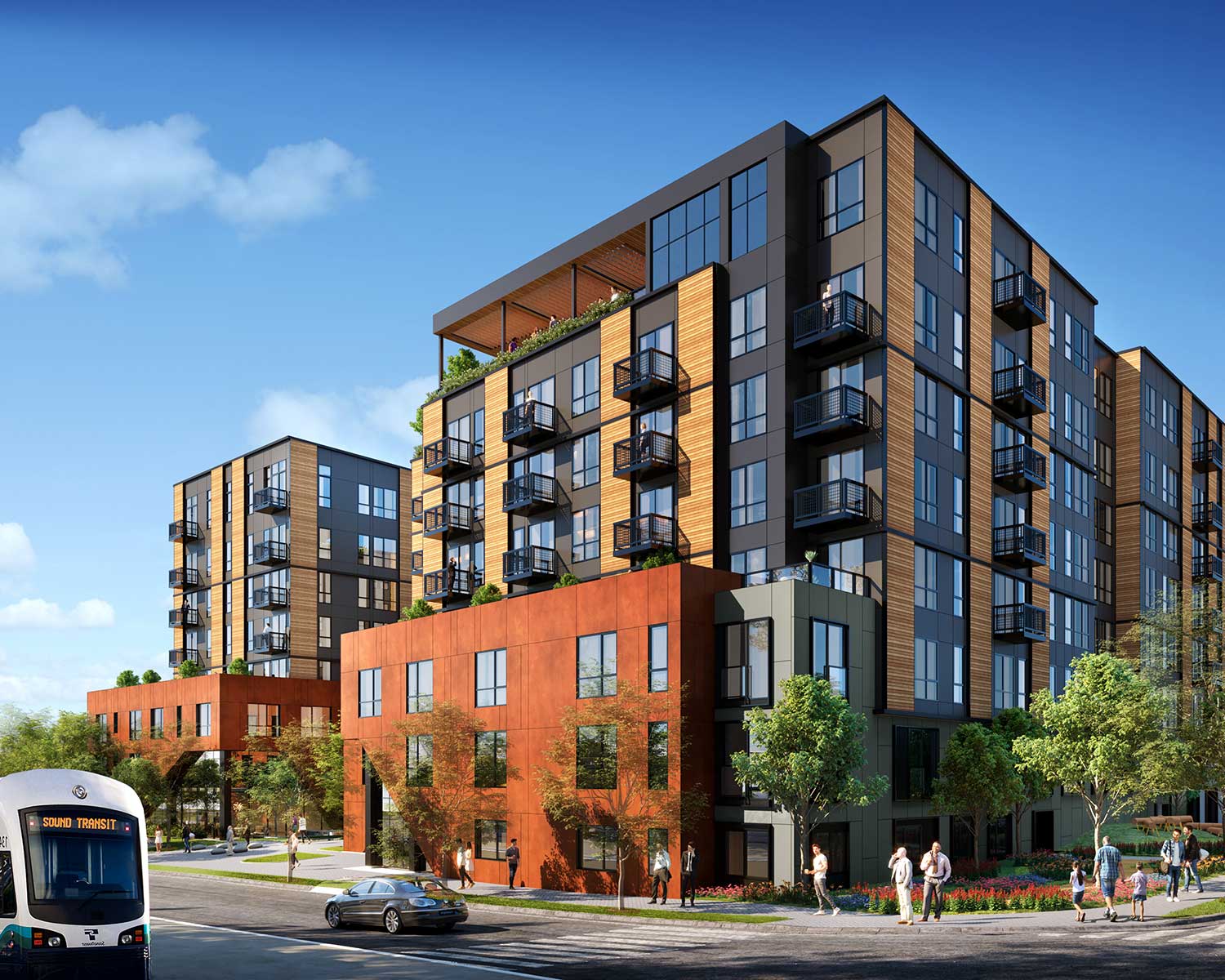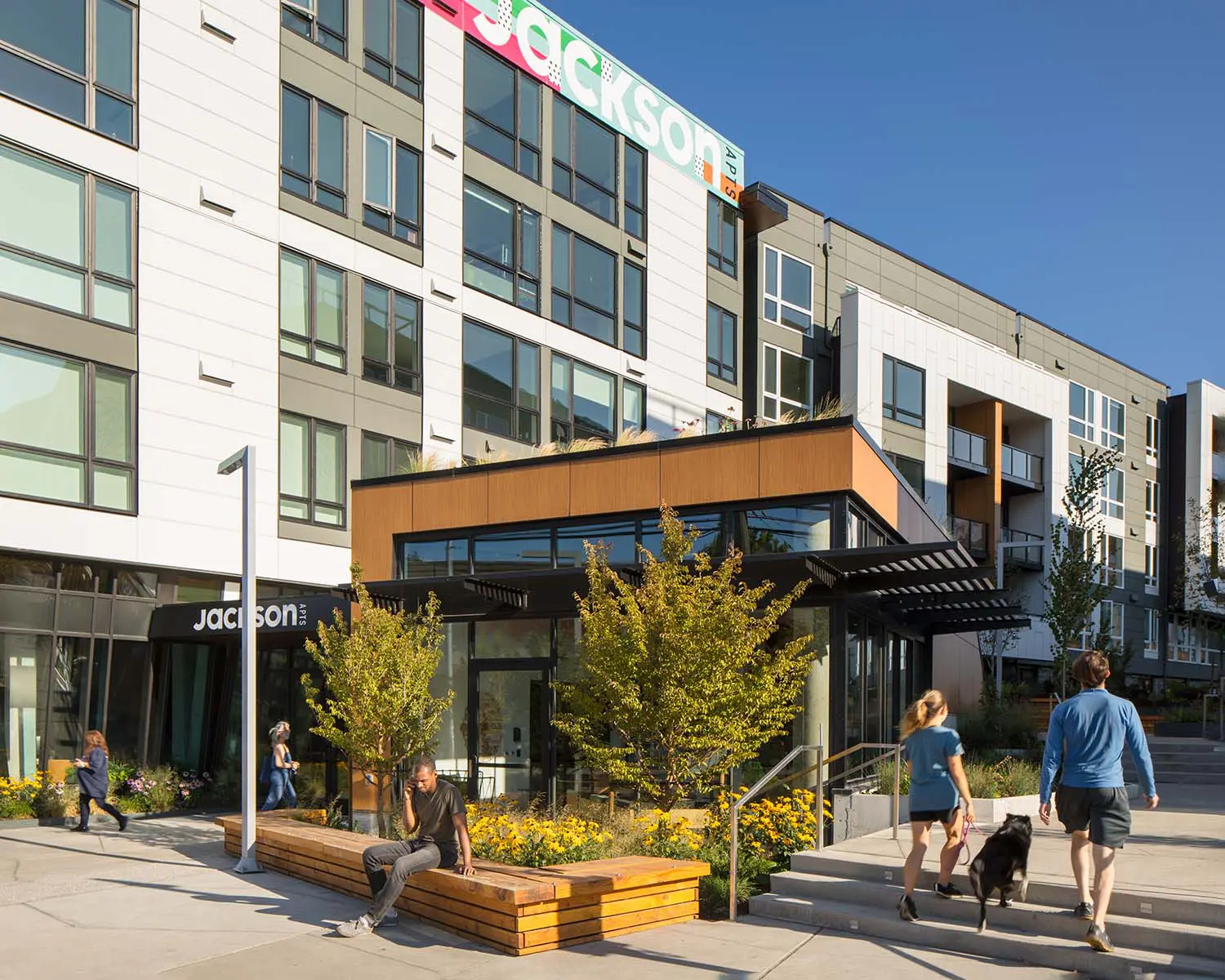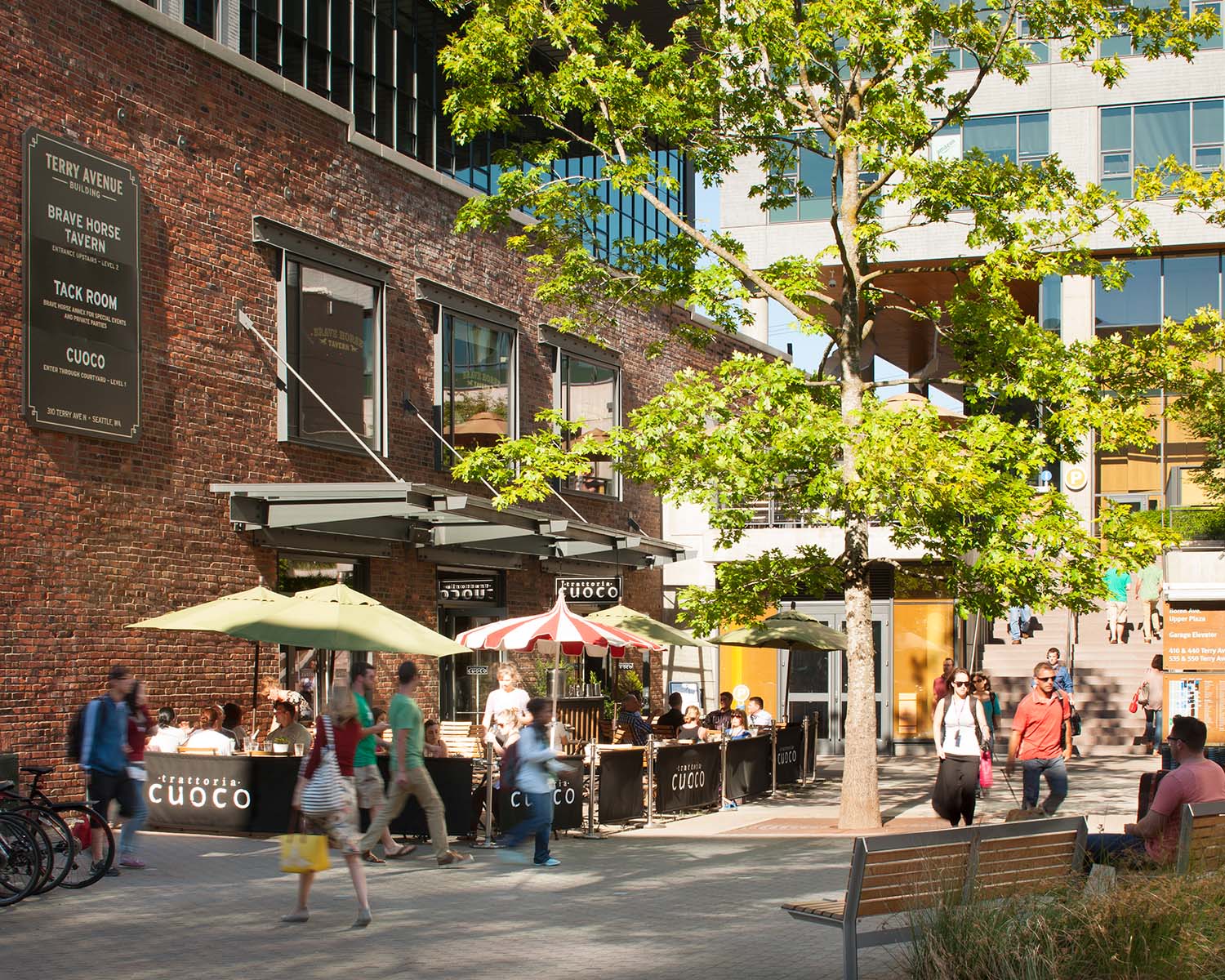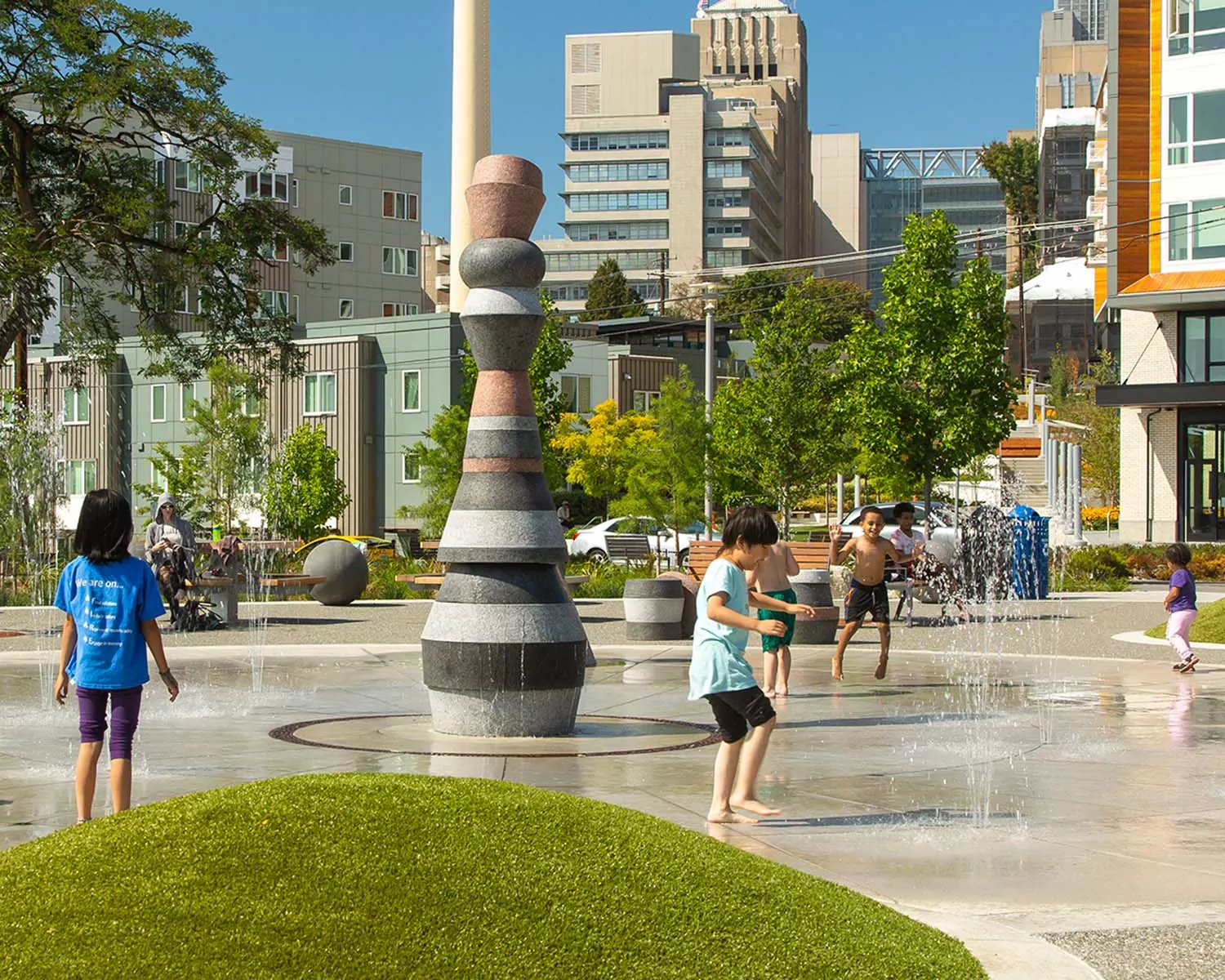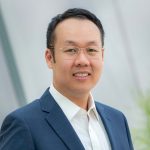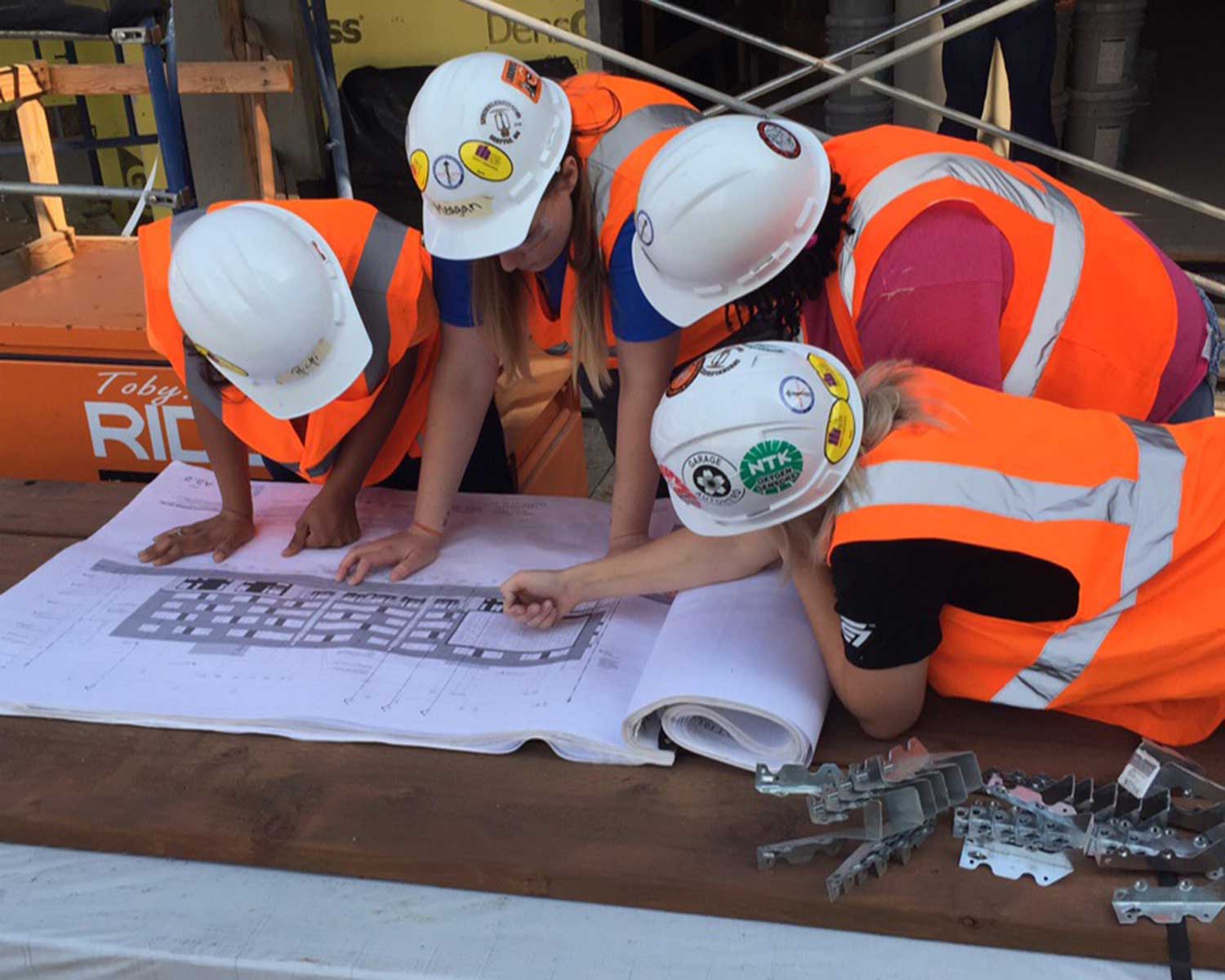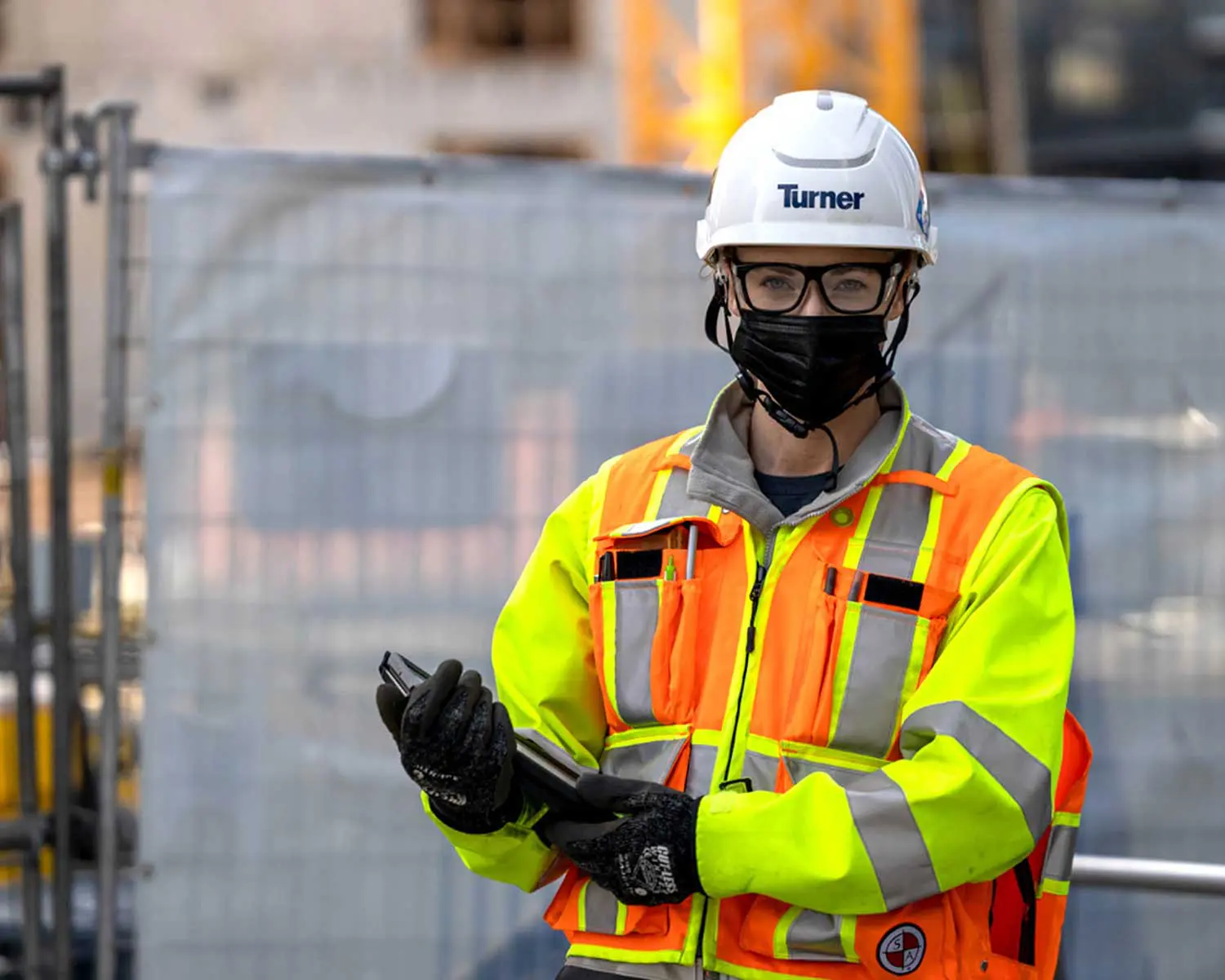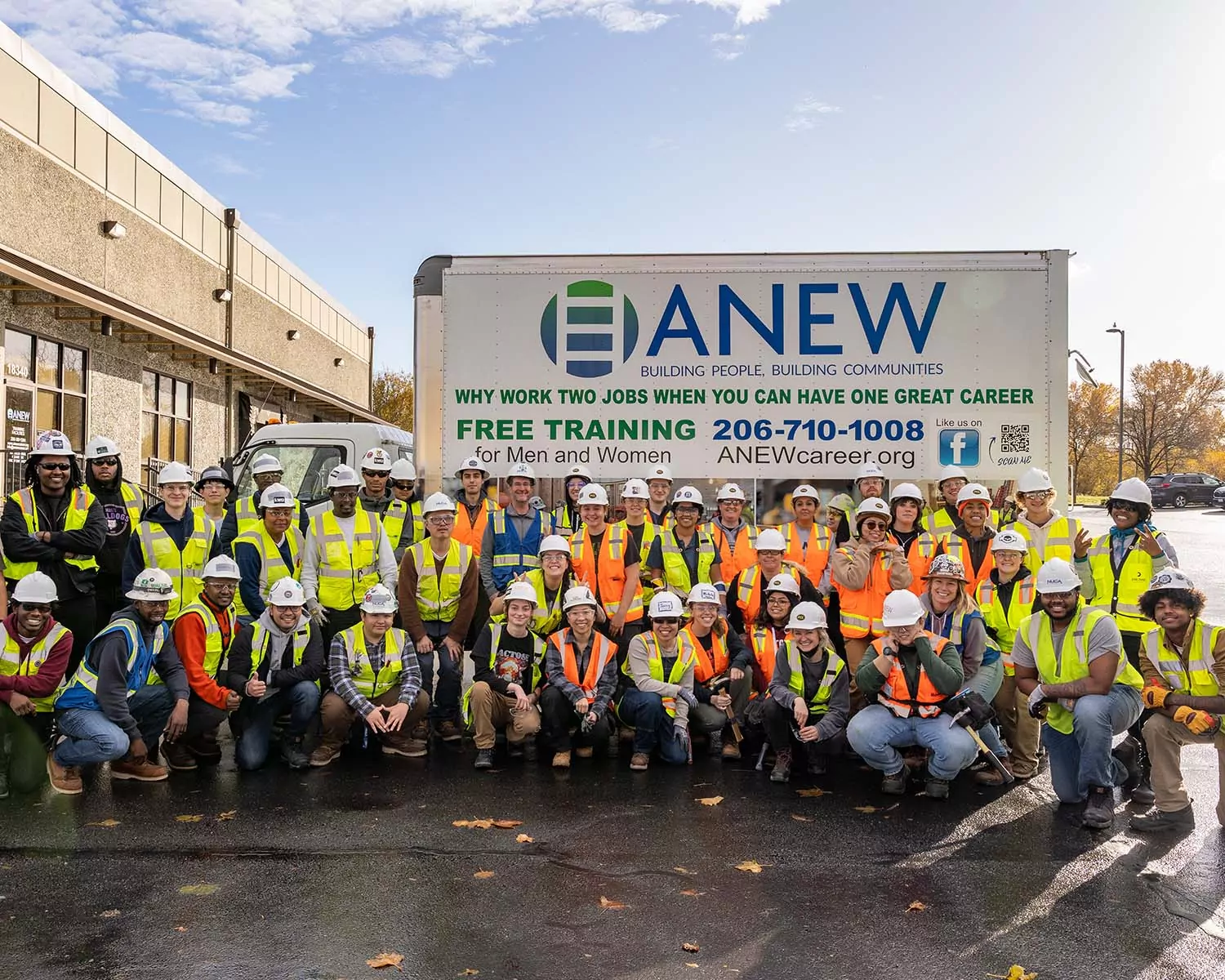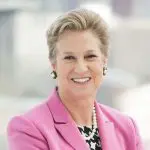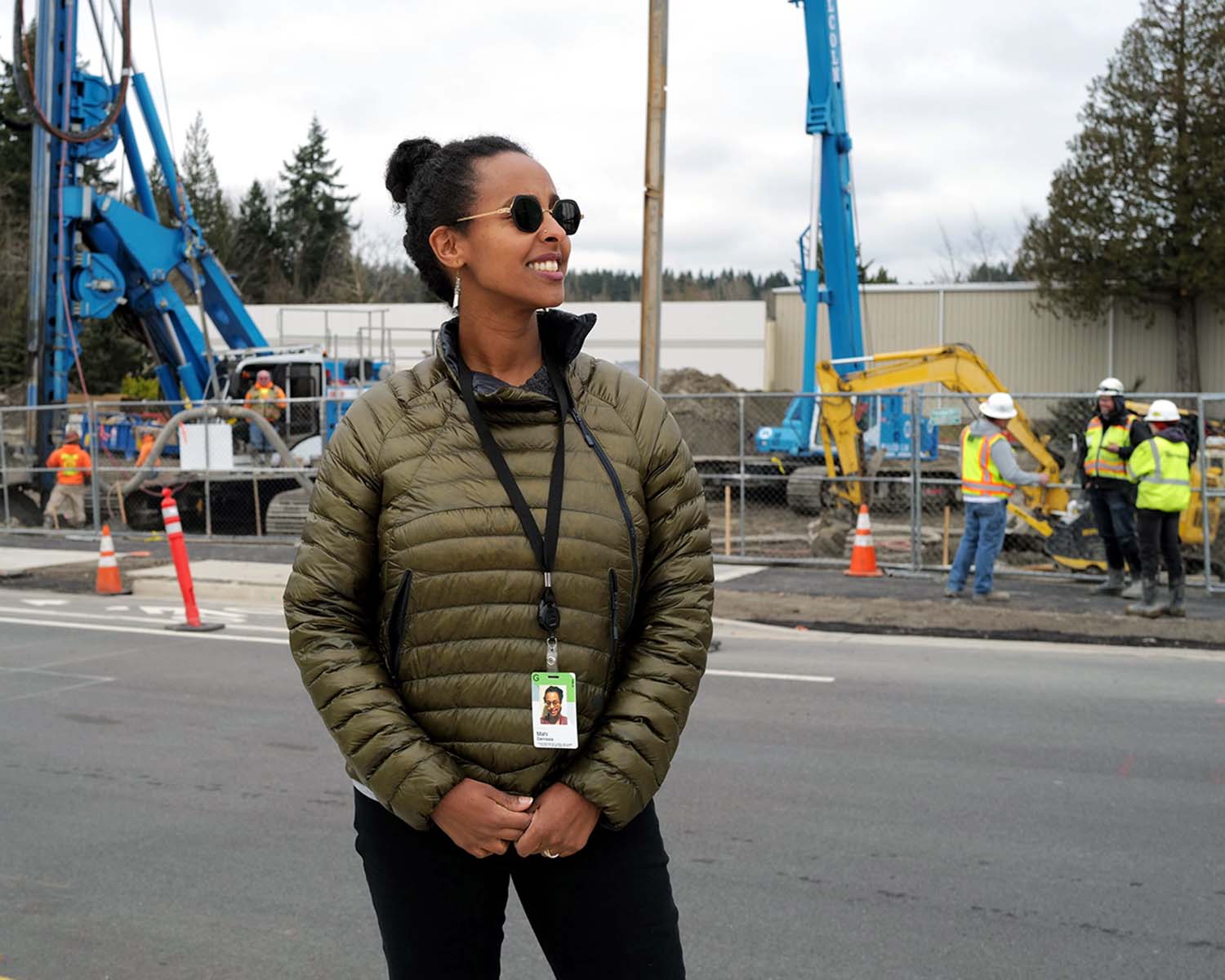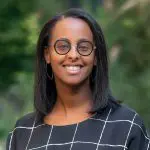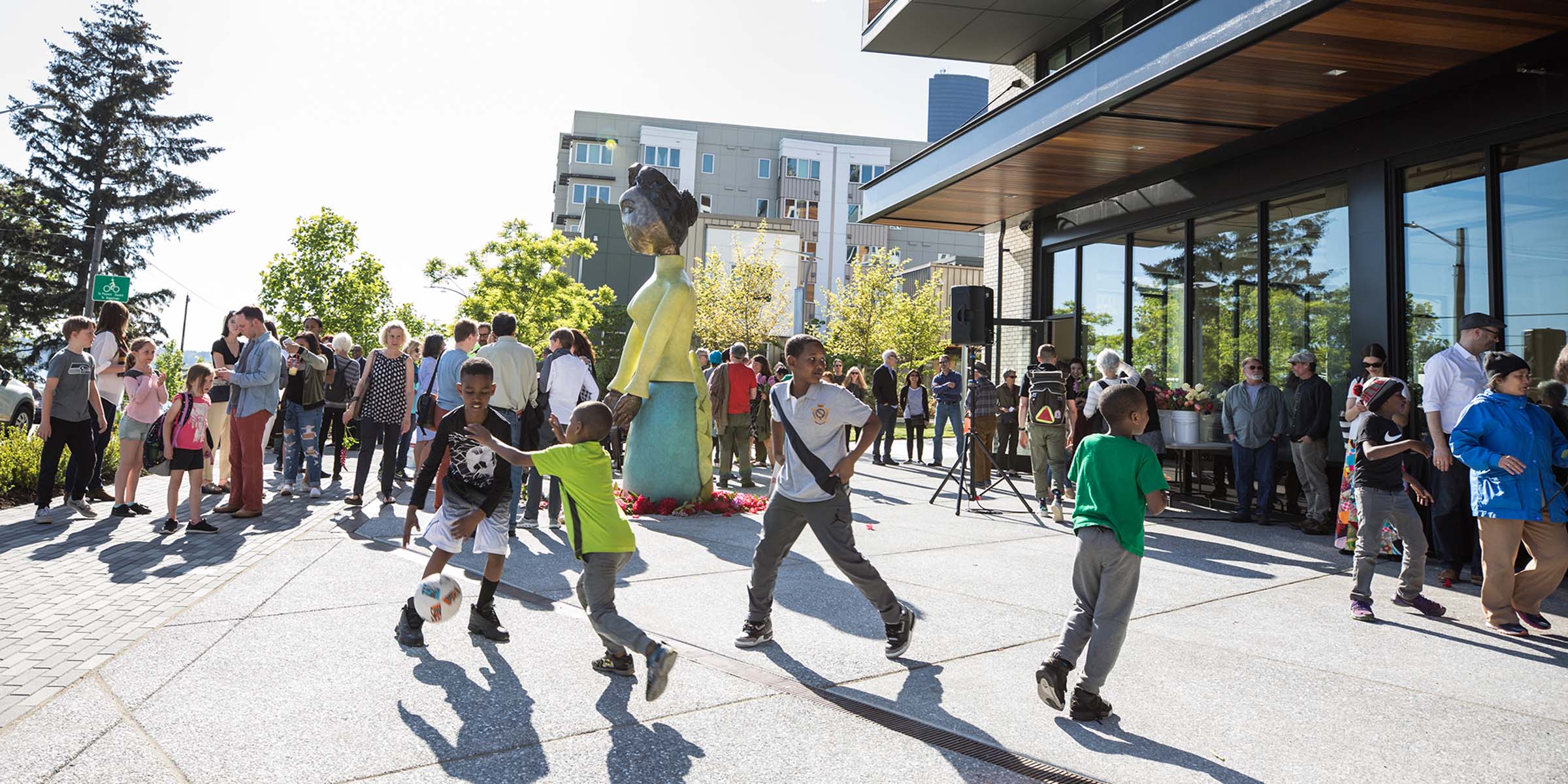
Anyone who lives or works in Seattle is all too aware of the challenges that come with being America’s fastest growing city. As our economy continues to boom, Seattle struggles with housing affordability, the homeless crisis and issues of inequality. How do we manage the challenges of success and ensure that our city remains inclusive and welcoming to people of all income levels and cultures?
There are no easy answers, but one bright spot is the on-going redevelopment of Seattle’s Yesler neighborhood–a partnership between the Seattle Housing Authority (SHA), the City of Seattle and private developers, including Vulcan Real Estate.
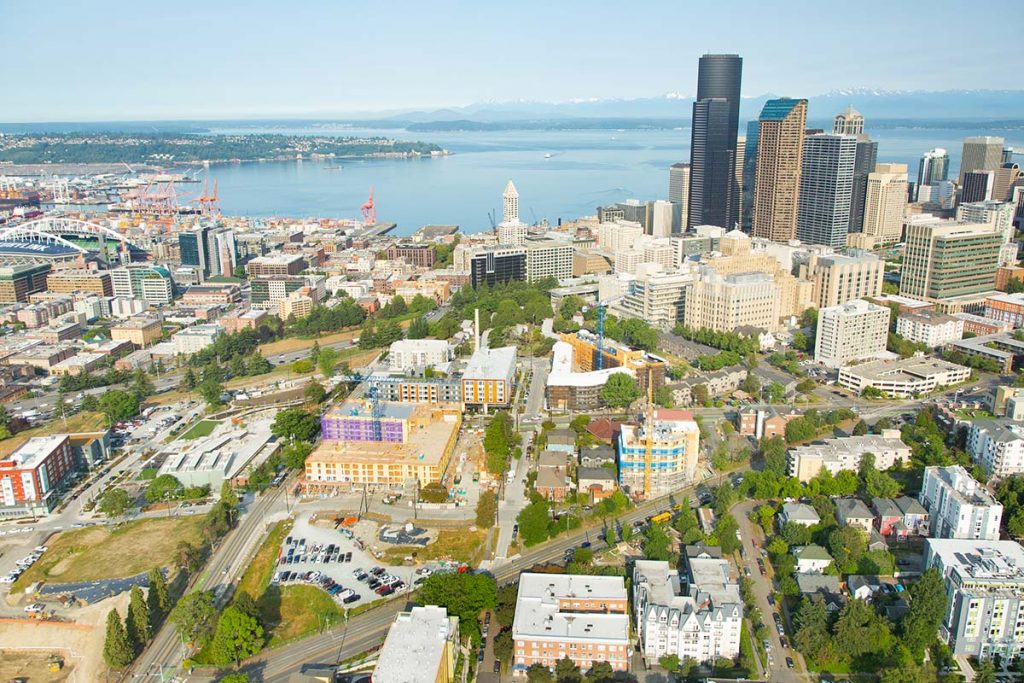
Neighborhood Overview
Located within walking distance of downtown, just east of Interstate-5, the 30 acres that encompass Yesler were developed in the early 1940s by SHA as the city’s first publicly subsidized and racially integrated housing community. In 2006, when it had become evident that Yesler’s infrastructure and 561 aging homes needed to be replaced, SHA worked with stakeholders to create a neighborhood intended to welcome people of all income levels and cultural identities.
Vulcan has purchased three parcels and will invest $200 million in projects that, when fully built out, will provide more than 650 apartments including approximately 130 affordable homes. In addition to its agreement with SHA to provide housing affordable to households earning 80 percent of AMI, Vulcan is voluntarily expanding affordability at its Yesler projects to households earning 65 percent of AMI, through Seattle’s Multi-family Tax Exemption program.
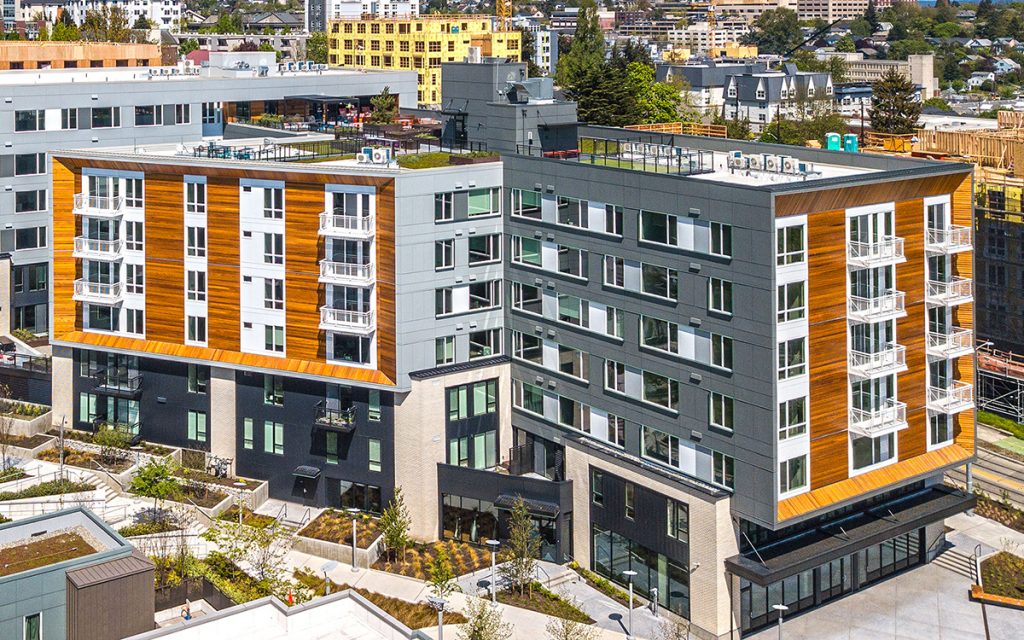
Community-Minded Design
Batik, Vulcan’s first multi-family apartment project in Yesler, opened in March 2018 and offers 195 apartments including 39 homes affordable to households earning 65 percent to 80 percent of AMI. While leasing is just getting started, Batik is already home to a diverse group of residents that reflects the neighborhood make up, including students, healthcare and tech employees, and 13 children ranging from infant to pre-teen.
In addition to providing housing and economic opportunities for people from multi-cultural and multi-income backgrounds, Yesler prioritized creating an inclusive community where people of different languages (more than 15 languages are spoken by residents in Yesler), incomes, cultures and ages feel welcome, respected and valued.
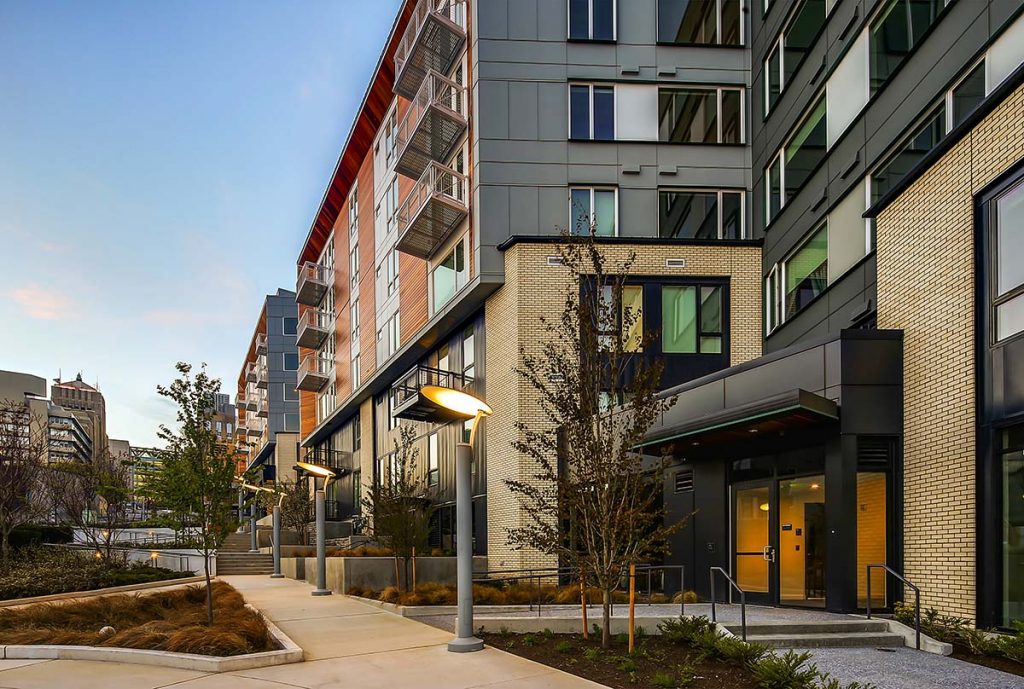
One of the ways we hope to achieve this goal is through the building design and amenities Vulcan has built into Batik including ground level apartments that have neighborhood stoops, retail that spills out onto a generous plaza, and a community kitchen that connects to a pedestrian pathway. The community kitchen will be an ideal space for residents to share pot-luck meals and pop-up dinners with neighbors, or learn how to partake in a traditional Ethiopian coffee ceremony.
Public Art with Heart
Like each of Vulcan’s development projects, Batik also features artwork from a local artist chosen specifically for the site. Vulcan commissioned Seattle artist, Saya Moriyasu, who created an 11-foot bronze figure of a woman that will be prominently installed along Yesler Way, adjacent to the project’s retail space. The artist has named the figure Maya, whom she says “guides, protects and cares for us.” SHA is also building a strong arts and culture program throughout the neighborhood.
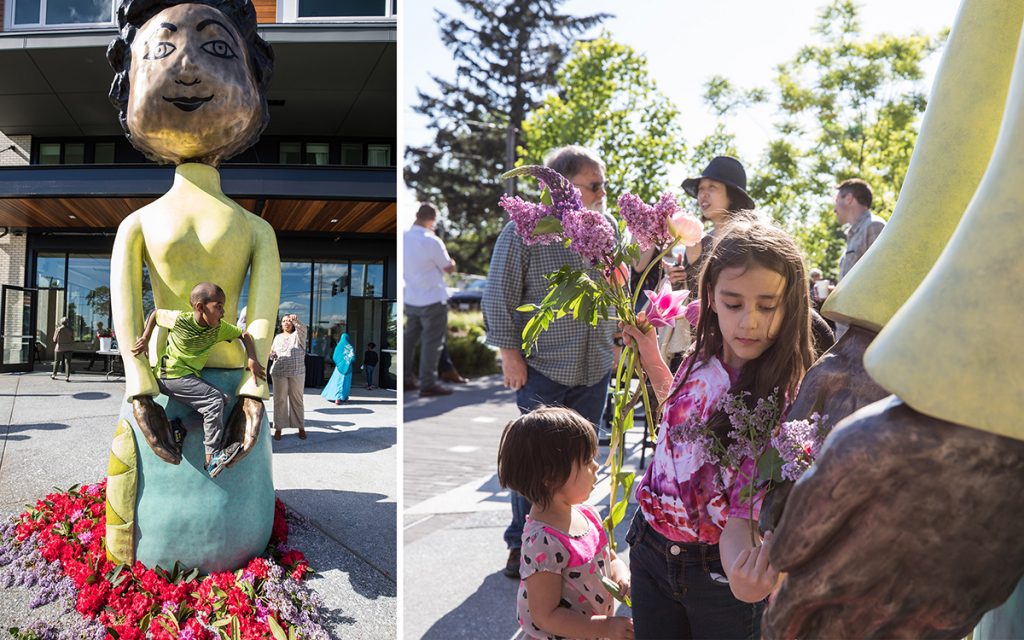
Inclusive Community
Yesler is more than just buildings. Many visitors to the neighborhood are surprised to find awe-inspiring views of Mount Rainier, a community park and other improvements. As our region continues to densify, the public and private sectors will need to continue to work together to contribute toward an inclusive community where everyone can benefit from the economic growth of our city.


